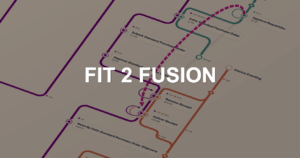
Unify: Unlocking True End-to-End Visibility with Object-Centric Process Mining for Oracle Fusion and EBS
Traditional process mining has long focused on a case-centric view, often tied to a single object such as an order or an invoice. But in today’s interconnected enterprise systems—especially within applications like Oracle Fusion and Oracle E-Business Suite (EBS)—this approach no longer captures the complexity of real-world operations.
At Process Minery, we’ve taken a bold step forward by introducing an Object-Centric Data Model in Celonis for Oracle Fusion, and extending it with seamless transformations for Oracle EBS. This powerful combination enables organizations to analyze their business processes across both systems within a single, unified data model—something that was previously difficult, if not impossible, to achieve.
What is Object-Centric Process Mining?
Object-Centric Process Mining shifts the focus from isolated case IDs to interconnected business objects—think sales orders, invoices, deliveries, and payments—recognizing that modern processes span multiple entities that interact over time.
Instead of analyzing siloed workflows, Object-Centric Process Mining allows you to explore multi-dimensional process behavior. This enables:
- A holistic view of processes that span multiple objects, systems or departments
- Identification of cross-object bottlenecks
- Better alignment between IT systems and actual business execution
One Unified Model for Oracle Fusion and EBS
Oracle customers often face challenges when transitioning from EBS to Fusion—or running them in parallel. Data structures differ, and aligning the process insights across these environments is often a manual, error-prone task.
With our new Object-Centric Data Model in Celonis for Oracle Fusion, and our tailored transformation layer for Oracle EBS, Process Minery bridges this gap. Here’s how:
- Fusion-native model: Built with a deep understanding of Oracle Fusion’s architecture and event logs
- EBS transformations: Map legacy Oracle EBS data into the same object-centric datamodel
- One data model: Unified analytics across both applications,
This innovation empowers organizations to achieve true end-to-end process visibility—whether you are fully migrated to Oracle Fusion, still using Oracle EBS, or in the middle of your digital transformation journey.
Unified Analytics Across Oracle Fusion and EBS
As organizations transition from Oracle E-Business Suite (EBS) to Oracle Fusion, they often find themselves in a hybrid ERP environment — with business processes, data, and reporting needs split across both platforms. This hybrid state may last months or even years, depending on the complexity of the migration.
Traditional analytics tools struggle to provide meaningful insights across such fragmented landscapes. That’s where object-centric process mining in Celonis delivers real value.
Our unified data model connects and correlates process data across both EBS and Fusion, enabling organizations to maintain end-to-end visibility before, during, and after ERP migration.
🔍 Example: On-Time Payment App
The On-Time Payment App in Celonis illustrates this unified approach in action. It brings together related objects — Purchase Orders, Goods Receipts, Invoices, and Payments — from both EBS and Fusion into a single timeline. Whether you’re tracking historical performance in EBS or monitoring live transactions in Fusion, the app provides a continuous, cross-system view of payment behavior.

Why It Matters
- Future-Proof: Align your process mining efforts with Oracle’s long-term direction
- Seamless Transition: Analyze Oracle EBS and Oracle Fusion processes in parallel
- Accelerated Insights: Faster deployment, faster ROI, and continuous improvement
Ready to See It in Action?
Object-Centric Process Mining is not just a new buzzword—it’s a foundational capability for any business serious about process intelligence in a hybrid ERP landscape.
Interested in exploring how this works for your organization? Book a demo or contact our team to learn how Process Minery can help you make the most of your Oracle data.








